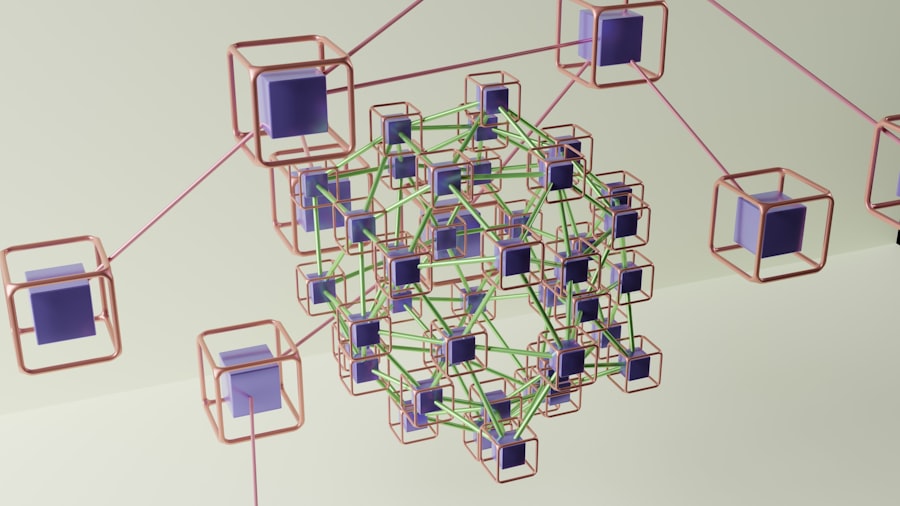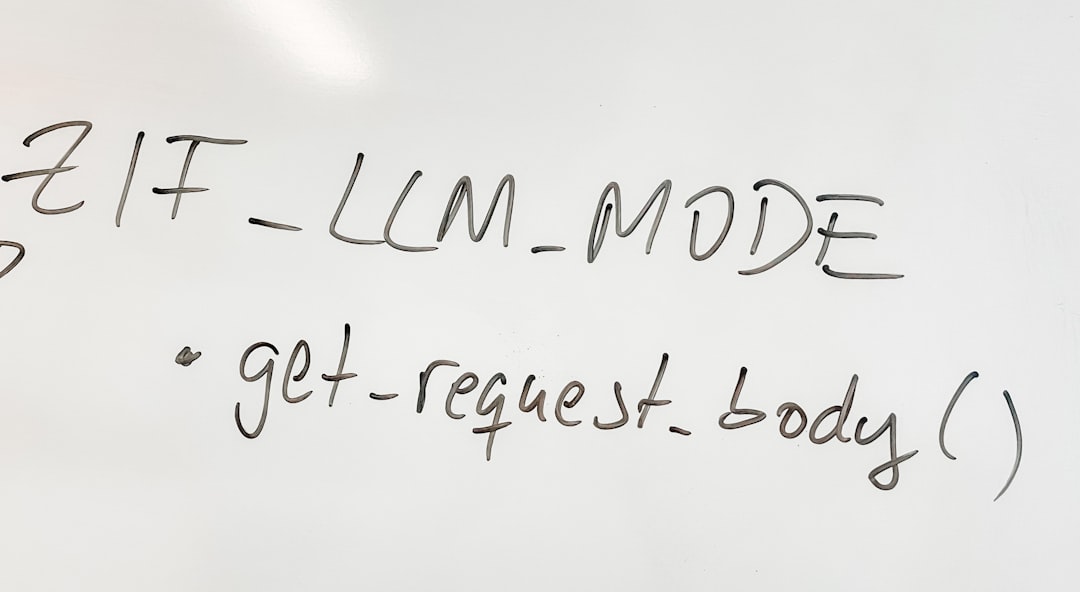The Default Mode Network (DMN) is a fascinating and complex network of brain regions that become active when you are at rest and not focused on the external environment. This network was first identified through neuroimaging studies that revealed specific areas of the brain that show increased activity during rest periods, particularly when individuals are engaged in self-referential thought or daydreaming. The DMN includes key regions such as the medial prefrontal cortex, posterior cingulate cortex, and the angular gyrus, among others.
Understanding the DMN is crucial because it provides insights into how your brain functions when it is not actively engaged in a task. As you delve deeper into the workings of the DMN, you may find it intriguing that this network is often contrasted with task-positive networks, which are activated during goal-directed activities. The DMN essentially represents a baseline state of brain activity, highlighting the brain’s propensity to engage in internal thought processes.
This internal dialogue can encompass a range of activities, from reminiscing about past experiences to contemplating future possibilities. By exploring the DMN, researchers are uncovering the intricate relationship between your thoughts, emotions, and overall cognitive functioning.
Key Takeaways
- The Default Mode Network (DMN) is a network of brain regions that is active when the mind is at rest and not focused on the outside world.
- The DMN is involved in self-reflection, introspection, mind-wandering, creativity, social cognition, and meditation.
- The DMN plays a role in mental health conditions such as depression, anxiety, and ADHD.
- Mindfulness meditation and certain lifestyle factors can support and enhance the functioning of the DMN.
- Aging can affect the DMN, leading to changes in cognitive function and memory.
The Functions of the Default Mode Network
The functions of the Default Mode Network are diverse and multifaceted, playing a pivotal role in various cognitive processes. One of the primary functions of the DMN is to facilitate self-referential thinking. When you reflect on your own experiences, beliefs, and emotions, the DMN becomes highly active.
This self-referential processing is essential for developing a coherent sense of identity and understanding your place in the world. It allows you to connect past experiences with present circumstances, fostering personal growth and insight. In addition to self-reflection, the DMN is also involved in memory retrieval and envisioning future scenarios.
When you think about past events or imagine what might happen next, the DMN helps you navigate these mental landscapes. This ability to mentally travel through time is crucial for planning and decision-making, as it enables you to weigh options based on previous experiences and potential outcomes. The interplay between memory and imagination within the DMN underscores its significance in shaping your thoughts and actions.
The Brain’s Resting State and the Default Mode Network

The concept of the brain’s resting state is closely tied to the Default Mode Network. When you are not engaged in any specific task, your brain does not simply shut down; instead, it enters a resting state characterized by spontaneous neural activity. During this time, the DMN becomes particularly prominent, reflecting a unique aspect of your cognitive architecture.
This resting state is essential for maintaining mental health and cognitive flexibility, allowing your mind to wander freely and explore various thoughts without external constraints. Research has shown that the resting state of the brain is not merely a passive experience; it serves as a foundation for cognitive processes that occur during active engagement. The DMN’s activity during rest can influence how effectively you perform tasks later on.
For instance, when you allow your mind to wander and engage with your thoughts during downtime, you may find that you approach challenges with greater creativity and insight when you return to focused work. This highlights the importance of balancing periods of rest with periods of active engagement in your daily life.
The Role of the Default Mode Network in Self-Reflection and Introspection
| Study | Participants | Method | Findings |
|---|---|---|---|
| Study 1 | 20 healthy adults | Resting-state fMRI | DMN activity increased during self-reflection tasks |
| Study 2 | 15 individuals with depression | Task-based fMRI | Reduced DMN activity during introspection tasks |
| Study 3 | 25 participants with mindfulness training | Self-report questionnaires | Increased connectivity within the DMN after mindfulness training |
Self-reflection and introspection are integral components of personal development, and the Default Mode Network plays a crucial role in these processes. When you take time to reflect on your thoughts and feelings, the DMN becomes activated, allowing you to explore your inner world more deeply. This introspective journey can lead to greater self-awareness, helping you understand your motivations, desires, and fears.
By engaging with your inner dialogue through the lens of the DMN, you can gain valuable insights that inform your decisions and actions. Moreover, self-reflection facilitated by the DMN can enhance emotional regulation. As you contemplate your experiences and emotions, you may find that you develop a more nuanced understanding of your reactions to various situations.
This heightened awareness can empower you to respond more thoughtfully rather than react impulsively. In this way, the DMN serves as a vital tool for navigating the complexities of human emotion and behavior, ultimately contributing to your overall well-being.
Default Mode Network and Mental Health Conditions
The Default Mode Network has garnered significant attention in recent years for its potential links to various mental health conditions. Research suggests that dysregulation within the DMN may be associated with disorders such as depression, anxiety, and schizophrenia. For instance, individuals with depression often exhibit altered connectivity within the DMN, which can manifest as ruminative thinking patterns that trap them in negative thought cycles.
Understanding these connections can provide valuable insights into how mental health conditions affect cognitive processes. Furthermore, exploring the DMN’s role in mental health opens up new avenues for therapeutic interventions. By targeting the DMN through mindfulness practices or cognitive-behavioral strategies, individuals may be able to recalibrate their brain activity and foster healthier thought patterns.
This approach emphasizes the importance of self-awareness and introspection in managing mental health challenges, highlighting how understanding your own cognitive processes can lead to positive change.
Default Mode Network and Mind-Wandering

Mind-wandering is a common experience that many people encounter throughout their day-to-day lives, and it is intricately linked to the Default Mode Network. When your mind drifts away from immediate tasks or external stimuli, it often activates the DMN, allowing for spontaneous thoughts and ideas to emerge. While mind-wandering can sometimes be seen as a distraction, it also serves important cognitive functions that can enhance creativity and problem-solving abilities.
Engaging in mind-wandering allows you to explore new ideas and perspectives that may not surface during focused attention. As your thoughts meander through various topics and associations, you may stumble upon innovative solutions or creative insights that can inform your work or personal projects. Embracing mind-wandering as a natural part of your cognitive process can lead to unexpected breakthroughs and foster a more open-minded approach to challenges.
Default Mode Network and Creativity
Creativity thrives on connections between seemingly unrelated ideas, and the Default Mode Network plays a pivotal role in facilitating this process. When you allow your mind to wander or engage in free association, the DMN becomes active, enabling you to tap into a reservoir of imaginative potential. This network’s ability to integrate diverse information from memory and experience allows for novel combinations that can lead to creative insights.
Moreover, many creative individuals report that their best ideas often come during moments of relaxation or daydreaming—times when they are not actively trying to solve a problem. This phenomenon underscores the importance of giving yourself permission to step back from focused work and engage with your thoughts freely. By nurturing your connection with the DMN, you can cultivate an environment conducive to creativity and innovation.
The Default Mode Network and Social Cognition
Social cognition—the ability to understand and navigate social interactions—is another area where the Default Mode Network plays a significant role. When you engage in social thinking—such as considering others’ perspectives or reflecting on social relationships—the DMN becomes activated. This network helps you process social information by integrating past experiences with current social contexts, allowing for more nuanced interactions with others.
Understanding how the DMN influences social cognition can enhance your interpersonal skills and emotional intelligence.
This heightened awareness can lead to more meaningful connections and improved communication skills, ultimately enriching your relationships.
Default Mode Network and Aging
As you age, changes in brain function are inevitable, including alterations in the Default Mode Network. Research indicates that older adults may experience shifts in DMN connectivity that can impact cognitive performance and self-referential thought processes. While some aspects of aging may lead to declines in memory or cognitive flexibility, understanding these changes within the context of the DMN can provide valuable insights into maintaining cognitive health.
Engaging in activities that stimulate the DMN—such as mindfulness practices or creative pursuits—can help mitigate some age-related cognitive decline. By fostering an active relationship with your own thoughts and reflections, you can support cognitive resilience as you navigate the aging process. Embracing lifelong learning and self-exploration can empower you to maintain mental agility well into later years.
Default Mode Network and Meditation
Meditation has gained popularity as a practice for enhancing mental well-being, and its effects on the Default Mode Network are particularly noteworthy. Research has shown that regular meditation practice can lead to changes in DMN activity patterns, promoting greater connectivity within this network while also enhancing emotional regulation and self-awareness. As you engage in meditation, you may find that it allows for deeper introspection and a more profound connection with your inner thoughts.
Through meditation, you can cultivate a sense of presence while simultaneously engaging with your internal dialogue. This practice encourages a non-judgmental awareness of thoughts as they arise, fostering a healthier relationship with your mind’s natural tendencies toward distraction or rumination. By integrating meditation into your routine, you can support the optimal functioning of the DMN while enhancing overall mental clarity.
How to Support and Enhance the Default Mode Network
Supporting and enhancing the Default Mode Network involves cultivating habits that promote introspection, creativity, and mental well-being. One effective way to do this is by incorporating regular periods of rest into your daily routine—allowing yourself time for mind-wandering or daydreaming without guilt or distraction. Engaging in activities such as journaling or creative expression can also stimulate DMN activity by encouraging self-reflection and imaginative thinking.
Additionally, mindfulness practices like meditation can significantly enhance your connection with the DMN by fostering greater awareness of your thoughts and emotions. By prioritizing self-care activities that promote relaxation—such as spending time in nature or engaging in hobbies—you create an environment conducive to optimal brain function. Ultimately, nurturing your relationship with the Default Mode Network can lead to greater self-awareness, creativity, and emotional resilience throughout your life journey.
For those interested in exploring more about the intricacies of the DMN, a related article on Freaky Science delves into the broader implications of this network in understanding human consciousness and its potential links to various psychological conditions. You can read more about these intriguing insights by visiting the article on Freaky Science.
WATCH THIS! The Default Mode Network: Why You Can’t Stop Thinking About That Cringe Moment
FAQs
What is the default mode network (DMN)?
The default mode network (DMN) is a network of brain regions that are active when the individual is not focused on the outside world and the brain is at wakeful rest.
What are the key brain regions involved in the default mode network?
The key brain regions involved in the default mode network include the medial prefrontal cortex, posterior cingulate cortex, precuneus, and inferior parietal lobule.
What functions is the default mode network associated with?
The default mode network is associated with various functions such as self-referential thinking, mind-wandering, autobiographical memory, and envisioning the future.
How is the default mode network studied?
The default mode network is studied using neuroimaging techniques such as functional magnetic resonance imaging (fMRI) and positron emission tomography (PET) to measure brain activity at rest.
What are the implications of default mode network dysfunction?
Dysfunction in the default mode network has been associated with various neurological and psychiatric disorders such as Alzheimer’s disease, autism, schizophrenia, and depression.
Can the default mode network be modulated?
Research suggests that the default mode network can be modulated through various interventions such as meditation, mindfulness practices, and certain medications.
